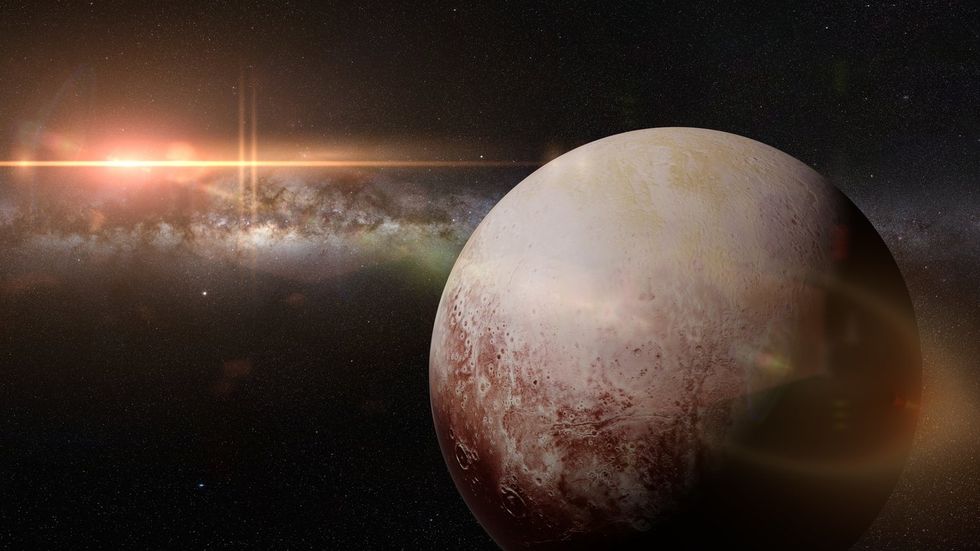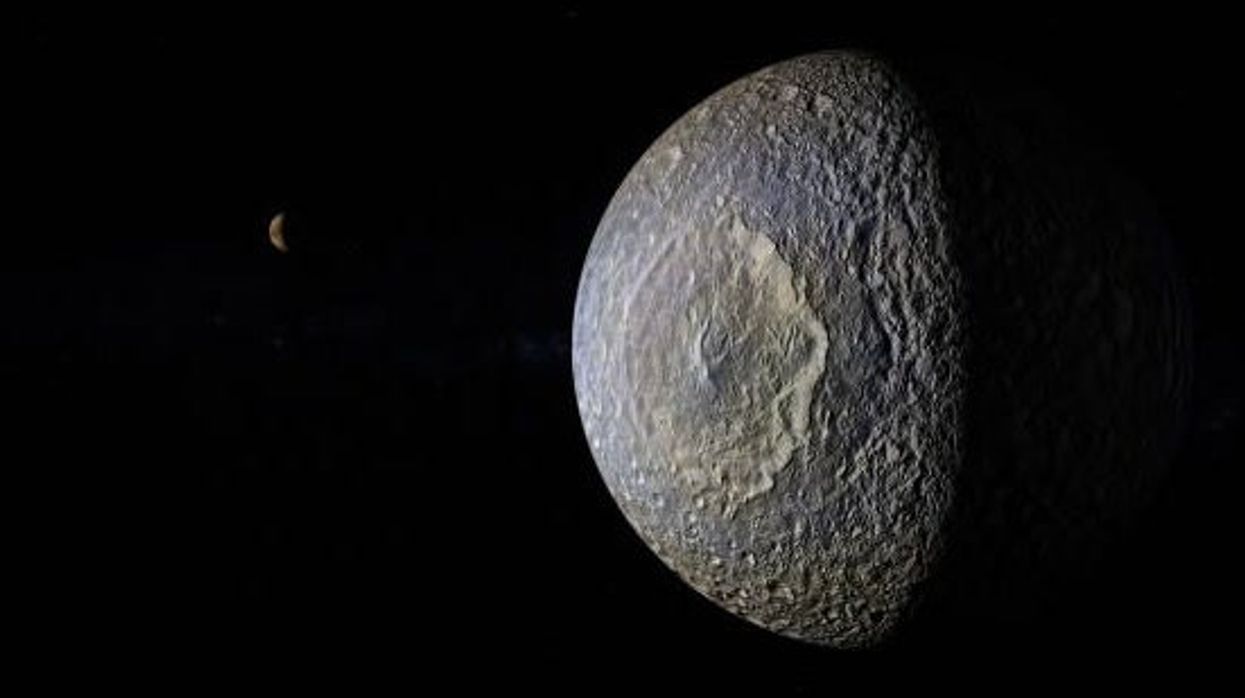Harry Fletcher
Feb 21, 2024
Ocean Found On Saturn’s Moon That Resembles The Death Star
unbranded - Newsworthy / VideoElephant
For the longest time, people thought they knew exactly where the oceans were: there's the Pacific, the Arctic, the Atlantic, the Indian and the Southern Ocean, and they make up two thirds of the Earth’s surface.
But then we were told that there’s a massive ocean hidden under the surface of the Earth and another tucked away under the surface of the Moon. Now, research has uncovered a warm ocean hiding out there in our solar system.
It's the most unlikely of places, too.
Scientists have been focusing on the Kuiper Belt, which is found past the orbit of Pluto and home to icy dwarf planets in one of the coldest sections of our Solar System.

However, against all the odds, there are a couple of dwarf planets out there which contain evidence of vast oceans.
Named Eris and Makemake, these celestial bodies are thought to contain huge areas of water beneath their frozen crusts. Scientists are pointing to the isotope ratios of frozen methane on the surfaces which are consistent with internal heating.
Subsurface oceans are, therefore, possible in the Kuiper belt, according to the new research, and the new development could change the way experts think about the prospect of finding water in the icy outer reaches of our solar system.
The findings are detailed in two papers published in Icarus. Planetary geochemist Christopher Glein of the Southwest Research Institute in Texas said: "We see some interesting signs of hot times in cool places.
"I came into this project thinking that large Kuiper Belt objects (KBOs) should have ancient surfaces populated by materials inherited from the primordial solar nebula, as their cold surfaces can preserve volatiles like methane. Instead, the James Webb Space Telescope (JWST) gave us a surprise! We found evidence pointing to thermal processes producing methane from within Eris and Makemake."
Glein went on to say: “Our data suggest elevated temperatures in the rocky cores of these worlds so that methane can be cooked up. Molecular nitrogen (N2) could be produced as well, and we see it on Eris. Hot cores could also point to potential sources of liquid water beneath their icy surfaces."
Sign up for our free indy100 weekly newsletter
How to join the indy100's free WhatsApp channel
Have your say in our news democracy. Click the upvote icon at the top of the page to help raise this article through the indy100 rankings
Top 100
The Conversation (0)














